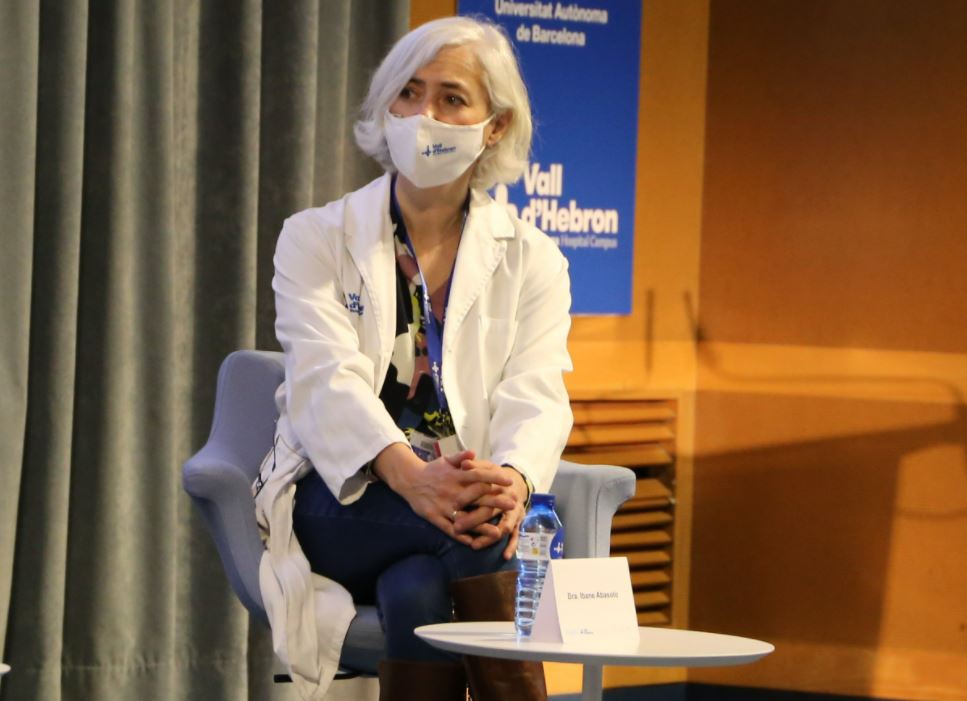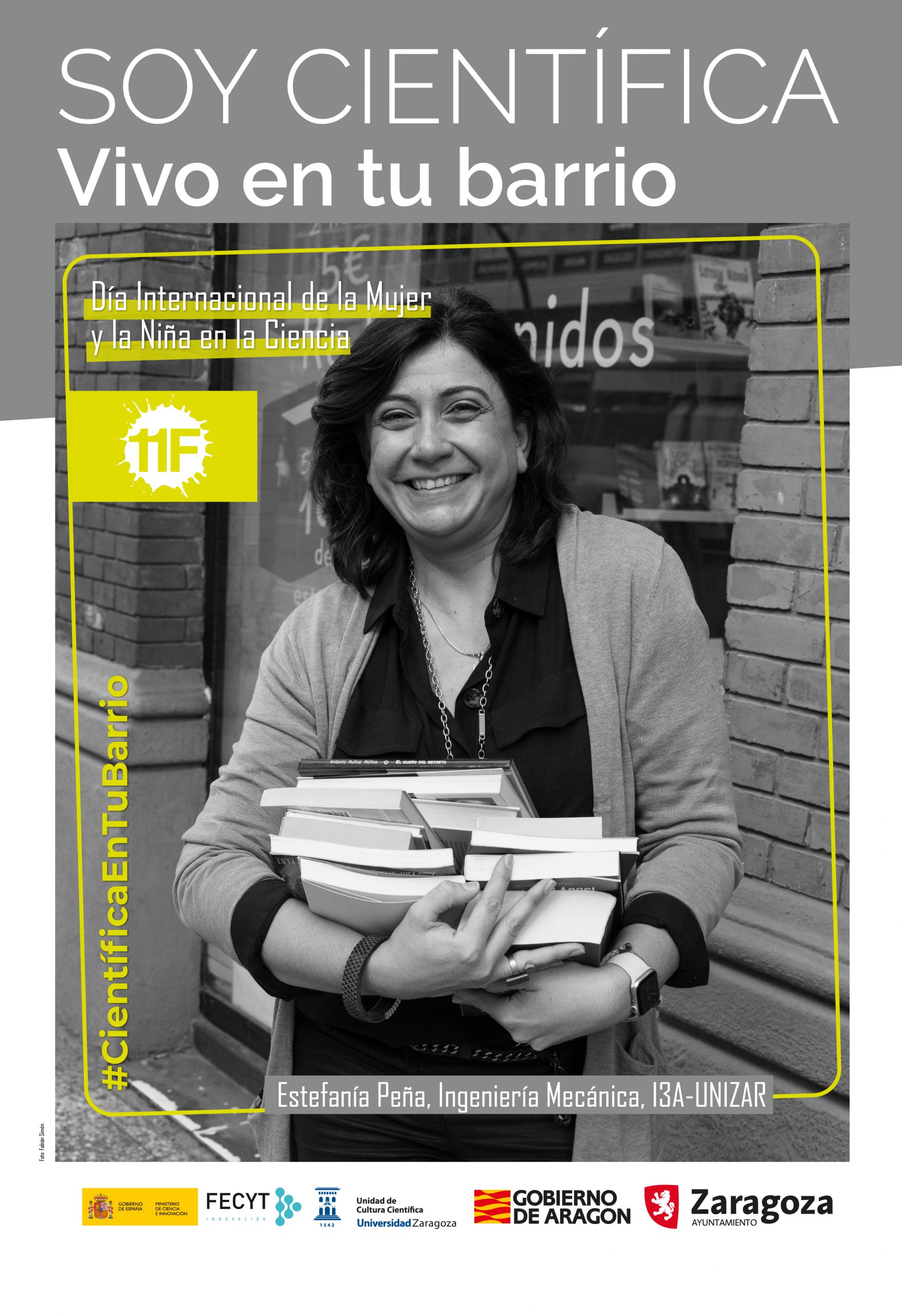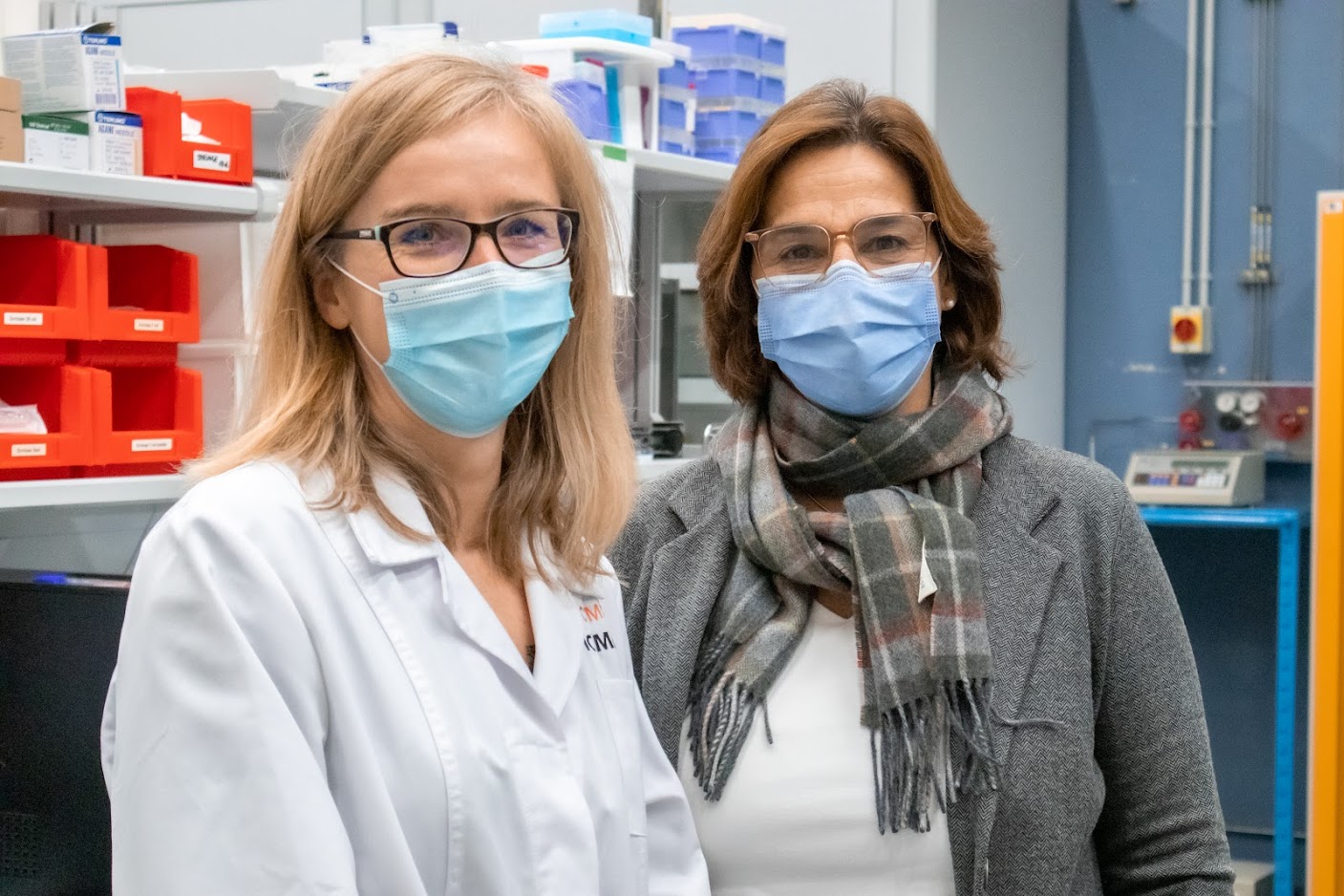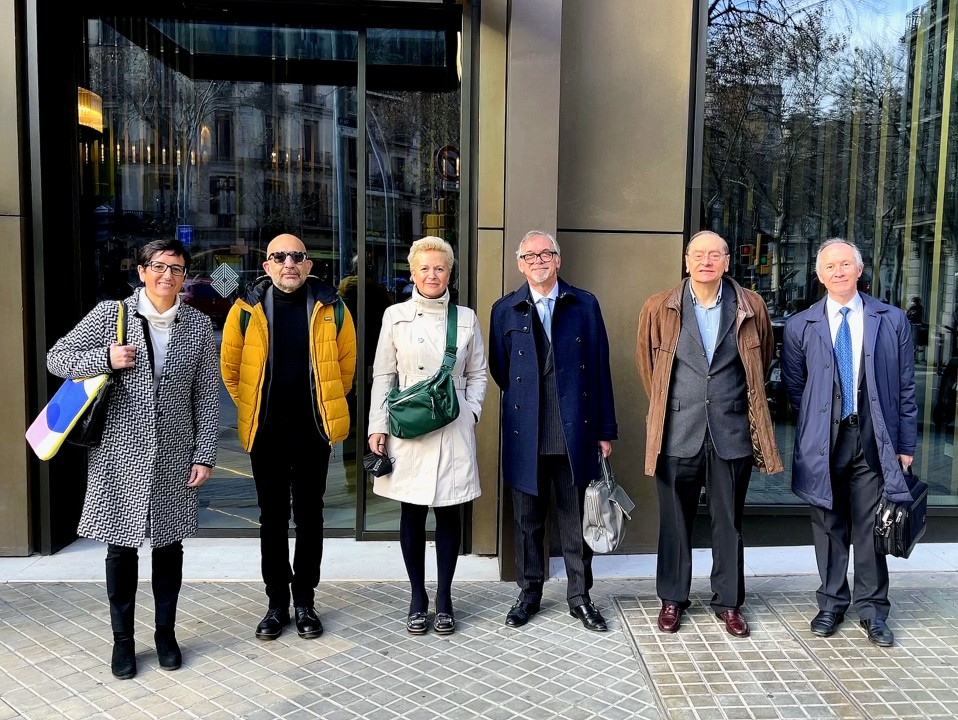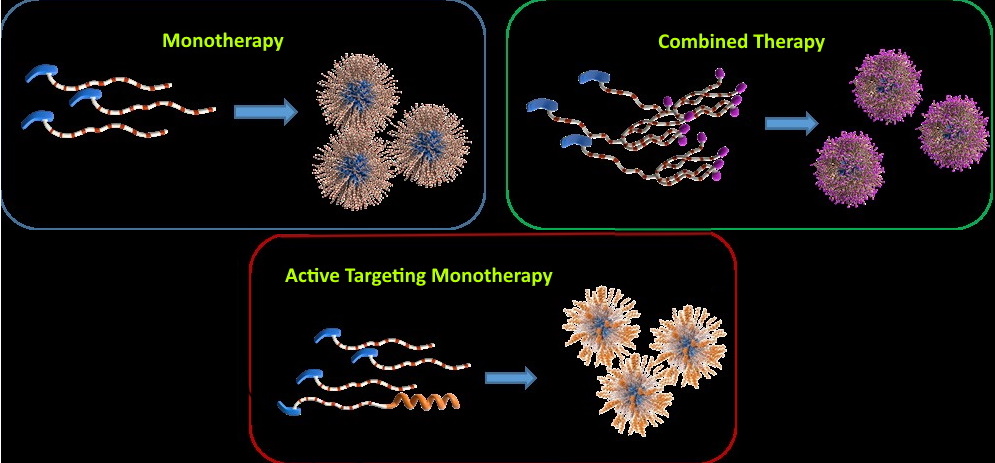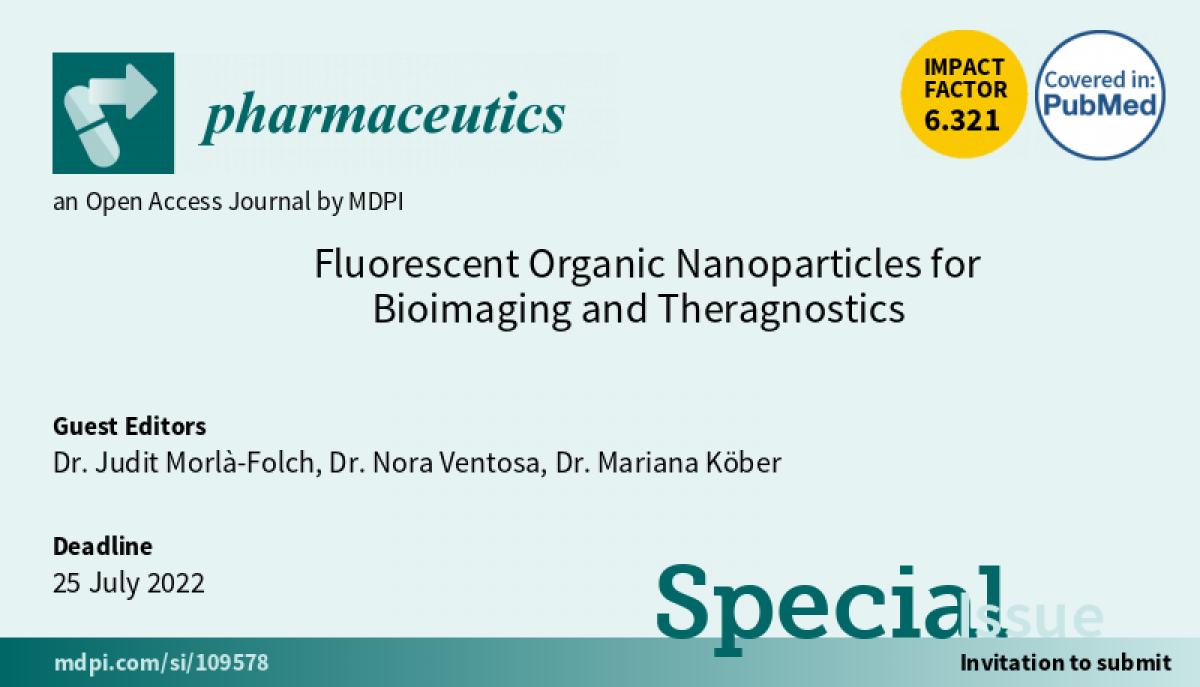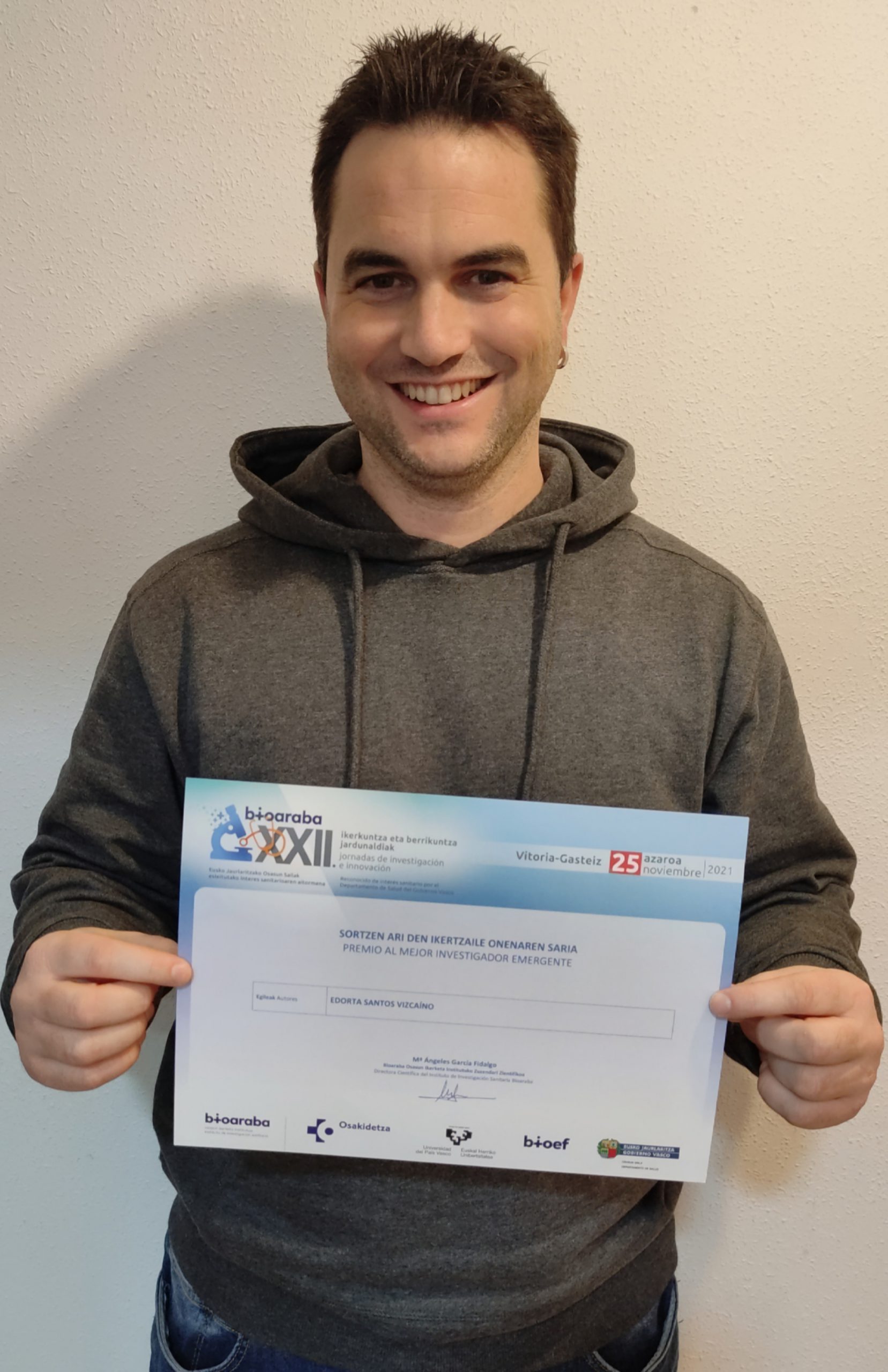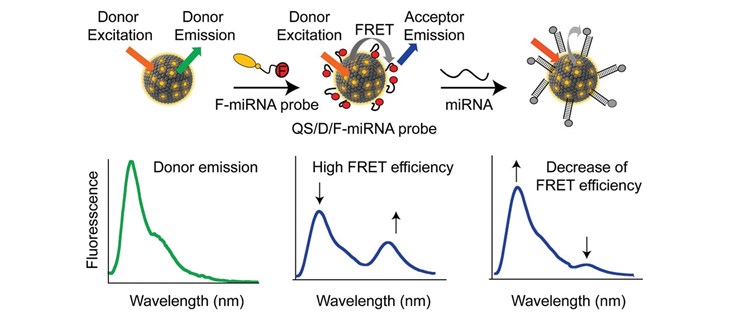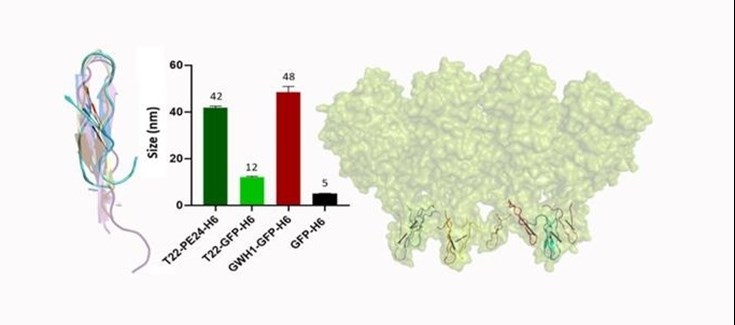Women in the fight against breast cancer: Ibane Ibasolo
The International Day of Women and Girls in Science on February 11 honor women’s significant achievements in science and place a much-needed focus on girls entering Science, Technology, Engineering, and Mathematics (STEM) careers.
We want to take this day to congratulate all the women scientists, especially our scientists at NANBIOSIS ICTS. Some of them take an active role in the dissemination of research results and reseach contribution to the society, as Dr. Ibane Abasolo who last week participated in different events to explain her team work in the figth against breast cancer.
Ibane Abasolo is the Scientific Coordinator of NANBIOSIS U20 and also the leader of the Drug Delivery & Targeting group of the CIBER-BBN at the Vall d’Hebron Research Institute (VHIR) which coordinates the unit 20 of NANBIOSIS, a team composed mainly by women.
The group cooworks to improve cancer treatment through the development of nanoparticles specially directed towards breast cancer stem cells. These cells are the ones that, despite dividing slowly, give rise to the differentiation of the rest of the tumor cells and are also the most resistant to conventional antitumor treatments.
That is why the group seeks to attack these cells in three ways:
i) selected drugs that induce the differentiation of tumor stem cells into more differentiated cells (and easier to treat),
2) using mechanisms to evade the efflux pumps of drugs and
3) targeting the nanoparticles specifically towards tumor stem cells by using targeting agents (ie antibodies) against antigens on the surface of tumor stem cells.
Dr. Abasolo has illustrated these three approaches by citing papers published in her group during 2021, in which the ICTS Nanbiosis U20 has also directly participated:
Gustavo Carreño, Alfredo Pereira, Fabián Ávila-Salas, Adolfo Marican, Fernanda Andrade, Maria Mercé Roca-Melendres, Oscar Valdés, Sekar Vijayakumar, Simó Schwartz, Ibane Abasolo, Diana Rafael, Esteban F. Durán-Lara, Development of “on-demand” thermo-responsive hydrogels for anti-cancer drugs sustained release: Rational design, in silico prediction and in vitro validation in colon cancer models, Materials Science and Engineering: C, Volume 131, 2021, 112483, ISSN 0928-4931, https://doi.org/10.1016/j.msec.2021.112483.
Yolanda Fernández, Julie Movellan,Laia Foradada, Vanessa Giménez, Natalia García-Aranda, Sandra Mancilla, Ana Armiñán, Sven Even Borgos, Astrid Hyldbakk, Anna Bogdanska, Oliviero L. Gobbo, Adriele Prina-Mello, Jessica Ponti, Luigi Calzolai, Oleksandr Zagorodko, Elena Gallon, Amaya Niño-Pariente, Alison Paul, Simó Schwartz Jr, Ibane Abasolo, María J. Vicent In Vivo Antitumor and Antimetastatic Efficacy of a Polyacetal-Based Paclitaxel Conjugate for Prostate Cancer Therapy. Adv Healthc Mater. 2021 Oct 27;e2101544. doi: 10.1002/adhm.202101544.
Diana Rafael, Maria Mercè Roca Melendres, Fernanda Andrade, Sara Montero, Francesc Martinez-Trucharte, Mireia Vilar-Hernandez, Esteban Francisco Durán-Lara, Simó Schwartz Jr, Ibane Abasolo,
Thermo-responsive hydrogels for cancer local therapy: Challenges and state-of-art, International Journal of Pharmaceutics, Volume 606, 2021,
120954, ISSN 0378-5173, https://doi.org/10.1016/j.ijpharm.2021.120954.
Marwa M Abu-Serie , Fernanda Andrade, Patricia Cámara-Sánchez, Joaquin Seras-Franzoso, Diana Rafael, Zamira V Díaz-Riascos, Petra Gener, Ibane Abasolo, Simó Schwartz Jr Pluronic F127 micelles improve the stability and enhance the anticancer stem cell efficacy of citral in breast cancer. Nanomedicine VOL. 16, NO. 17. 2021 Jul;16(17):1471-1485. doi: 10.2217/nnm-2021-0013.
Eva Espinosa-Cano, Miguel Huerta-Madroñal, Patricia Cámara-Sánchez, Joaquin Seras-Franzoso, Simo Schwartz, Ibane Abasolo, Julio San Román, Maria Rosa Aguilar, Hyaluronic acid (HA)-coated naproxen-nanoparticles selectively target breast cancer stem cells through COX-independent pathways, Materials Science and Engineering: C, Volume 124, 2021, 112024, ISSN 0928-4931, https://doi.org/10.1016/j.msec.2021.112024.
Fernanda Andrade, Diana Rafael, Mireia Vilar-Hernández, Sara Montero, Francesc Martínez-Trucharte, Joaquin Seras-Franzoso, Zamira V. Díaz-Riascos, Ana Boullosa, Natalia García-Aranda, Patricia Cámara-Sánchez, Diego Arango, Marika Nestor, Ibane Abasolo, Bruno Sarmento, Simó Schwartz, Polymeric micelles targeted against CD44v6 receptor increase niclosamide efficacy against colorectal cancer stem cells and reduce circulating tumor cells in vivo, Journal of Controlled Release, Volume 331, 2021, 198-212, ISSN 0168-3659, https://doi.org/10.1016/j.jconrel.2021.01.022.
